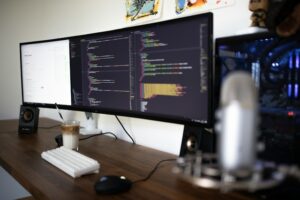
Bridging Sign Language and Community: The Rise of Flexible BSL Learning
British Sign Language (BSL) is a vital means of communication for the deaf community in the UK. With the evolution of educational technology, BSL learning has entered a new era of flexibility, accessibility, and inclusivity. This transformation not only changes how BSL is taught and learned but also highlights the growing importance of community in the digital age.
Dismantling Traditional Learning Barriers
Traditionally, the path to mastering BSL has been through in-person classes or formal certification programs. These paths, though rich in content and methodology, often need to align with the pace and lifestyle of modern learners. Educational commitments, work schedules, and geographical limitations can serve as formidable barriers. However, with the emergence of online courses and digital learning materials, these traditional hurdles are being systematically dismantled. The result is a more inclusive educational landscape where anyone, anywhere, can engage in the beautiful intricacies of BSL. So, embark on this BSL learning with Flexible BSL Learning with Online Courses.
The Technology Revolutionizing BSL Instruction
From virtual classrooms to interactive learning applications, technology is at the forefront of transforming BSL education. Apps like Sign BSL are pioneering a new way to learn sign language, offering users the convenience of on-the-go learning. These platforms provide a suite of tools—from video dictionaries to interactive quizzes—that empower users to engage with BSL at their convenience. They also facilitate personalized learning journeys, catering to the individual needs and learning styles of users, reinforcing the foundation of flexible learning.
The Power of Community in BSL Learning
The heart of BSL is its community, a vibrant network of individuals whose language is deeply entwined with their culture and identity. As BSL learning becomes more flexible, it also becomes more community-centric. Social media groups, online forums, and virtual meetups allow learners to connect, practice their skills, and seek guidance from native signers. This communal approach not only accelerates learning but also fosters a sense of belonging and support.
Adapting Pedagogy to Learner Needs
Flexibility in BSL learning is not just about the delivery of content; it also encompasses an adaptive pedagogical approach that caters to diverse learner needs. Visual, kinesthetic, and auditory learning styles are accounted for, with instructional materials that address these preferences. Moreover, adaptive learning technology is making headway, offering content that adjusts to a learner’s pace and comprehension, ensuring a more effective and personalized learning experience.

Corporate and Workplace Sign Language Training
The need for BSL proficiency is not confined to personal interests or academic pursuits; it extends to the workplace. Organisations are recognizing the importance of fostering an inclusive environment and are providing their employees with BSL training. The flexibility afforded by online learning platforms allows companies to onboard training more efficiently, leading to a more informed and inclusive workforce.
Ensuring Equivalency in Online and Offline Certifications
For those seeking formal recognition of their BSL proficiency, the challenge lies in ensuring that online learning aligns with the standards set by certification bodies. As the flexible BSL learning landscape continues to evolve, there is an ongoing effort to establish equivalency between online and offline certifications. This step is crucial in maintaining the integrity and quality of BSL instruction, ensuring that all learners, irrespective of their learning modality, receive proper recognition for their mastery of the language.
The Continuous Expansion of BSL Learning Opportunities
The momentum behind flexible BSL learning is going strong. New resources, courses, and instructional technologies are continually being developed, expanding the opportunities for individuals to learn and interact with this vital language. Whether it is through bite-sized lessons, immersive VR experiences, or bespoke tutoring sessions, the diverse pool of learning options is reflective of the innovative spirit driving the field forward.
The Road Ahead: Flexible BSL Learning in 2030
Looking ahead to the year 2030, flexible BSL learning will likely be the norm rather than the exception. Learners will have even more control over their learning pathways, choosing from a multitude of resources tailored to their needs. The integration of artificial intelligence promises to make BSL learning even more adaptive and responsive. Moreover, the continued collaboration between educational technology companies, certification bodies, and the deaf community will be instrumental in ensuring that the integrity and richness of BSL are preserved in the digital age.

Conclusion
The rise of flexible BSL learning is a testament to the resilience of sign languages in a rapidly changing world. It bridges the gap between traditional modes of instruction and the demands of modern learners, highlighting the adaptability and inclusivity at the core of this crucial language. As we continue to embrace the advantages that technology affords in education, the community that surrounds BSL remains the guiding force, reminding us that every sign and every expression is a testament to the unique bond between language and culture.







